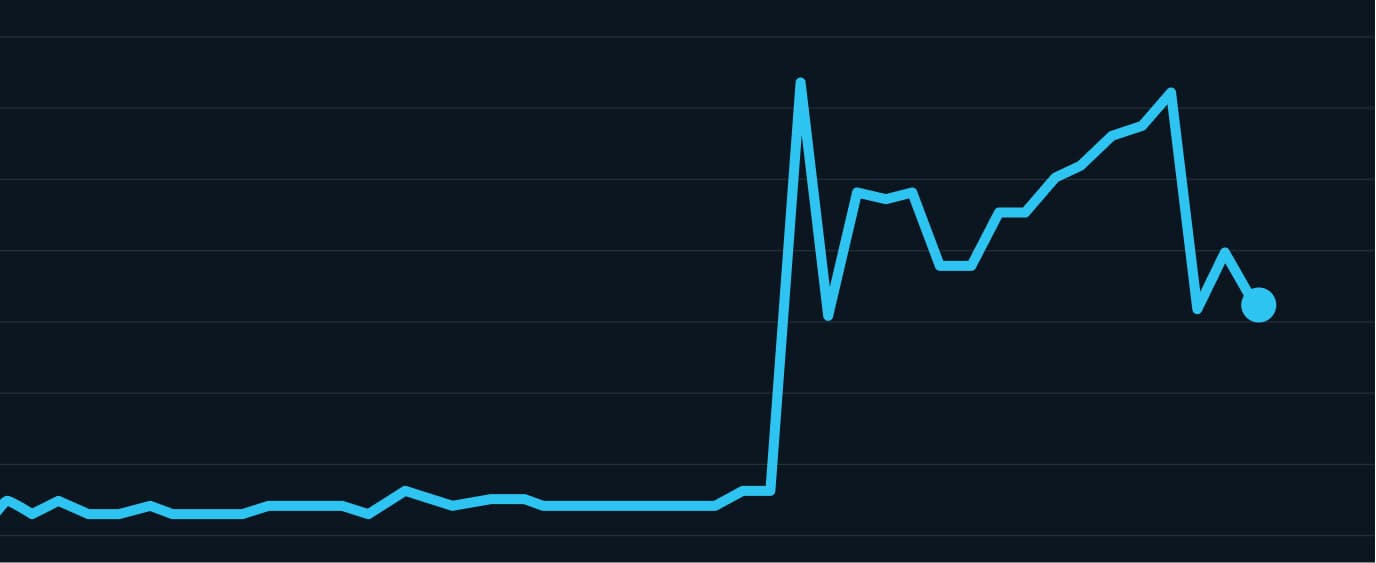Jan 27, 2022
What’s a Short Squeeze?
It can increase volatility and cause problems for investors.

In recent weeks you may have heard of something called a short squeeze. If you’re wondering what that means and how it can affect stock prices, we’ll explain it.
What does it mean to short a stock?
Typically when you buy a stock, you create a “long” position, meaning you purchase it at its current trading value.
Shorting is the reverse of buying long. It’s basically betting against a stock, and it’s a key technique used when an investor believes that the price of a stock will be lower in the future. In simple terms, it allows an investor to sell a share at the current price, while requiring them to buy the shares at some point in the future at an unknown price. This tactic involves borrowing shares from a broker, selling them to someone else, and betting that prices will drop before they decide to buy it back. At that point, the investor buys back the shares at the cheaper price, returns them to the broker—and pockets the difference (minus interest charged by the broker). However, if the share price is higher, the investor will lose money.
Short selling requires what’s called a margin account with a broker. There are lots of SEC rules and limitations on margin accounts—and plenty of risk. At Stash, we believe that shorting is best left to the pros, so we do not offer this to investors.
What’s a short squeeze?
Sometimes a large group of investors might believe that a company’s prospects are not good, and take very large short positions in the stock. In that case, investors are betting the stock will go down, and a significant percentage of the company’s outstanding stock is sold short. This can make the company vulnerable to something called a short squeeze.
A short squeeze happens when the stock price of a heavily shorted company starts to increase. Short sellers are forced to buy the stock back at higher prices. As they begin to buy the shares, it forces the stock to go even higher. This “squeezes” other short sellers, who are also then forced to cover their shares, and the cycle continues.
Usually a short squeeze happens when a company announces surprisingly good news. Imagine a company that is heavily shorted because many investors believe that the company’s revenue will decrease significantly. Let’s say that company instead announces that it has a new product line and revenues are going up. In that case, the stock price may start to head up, and a short squeeze may begin.
Sometimes, although not typically, investors band together to buy a company’s stock, driving it ever higher. These investors may not be buying based on fundamentals, and are simply bidding up the stock to create problems for short investors.
While there’s nothing illegal about this practice, in recent months short squeezes for various companies are reportedly being driven by small-time investors involved in options trading. Options trading can get complicated, but essentially in this scenario it means investors purchase a contract for a particular stock at a specified price, often much lower than the current trading price of the stock in question.
That can also lead to continued increases in that stock’s price, and the risk of increased volatility.
Blackberry, Gamestop, and more
Companies that have been involved in investor short squeezes in recent months include the video game retailer GameStop. The smartphone maker Blackberry and entertainment giant AMC have likewise been the subject of squeezes in January, 2021. And in fact, investment bank Goldman Sachs’s list of the most shorted stocks is reportedly up 25% in 2021, showing that shorting activity has increased dramatically this year.
Follow the Stash Way
At Stash we don’t believe in speculative investing. We believe in time in the market, not timing the market.
Remember, all investing involves risk, and you can lose money in the market. Stash recommends following the Stash Way, which involves investing for the long term, investing regularly, and diversification.
Related articles

financial-news
Apr 07, 2025
Investing During Volatile Times

financial-news
Apr 03, 2025
How to Stay the Course Through Tariffs and Turbulence

financial-news
May 15, 2024
Rebirth of the meme stock craze? 5 brutally honest reasons why you shouldn’t be buying, despite the hype

budgeting
Jan 09, 2024
9 ways to celebrate financial wellness month

financial-news
Nov 09, 2023
What is a Recession?

financial-news
May 15, 2023
The Stash Way: Invest Regularly
By using this website you agree to our Terms of Use and Privacy Policy. To begin investing on Stash, you must be approved from an account verification perspective and open a brokerage account.
